
Introduction to Graphs
CS 351: Analysis of Algorithms
This lecture covers the introduction to graphs, including their definition, types, and applications. We will explore the different types of graphs, their properties, and their applications.
Executive Summary
- Introduction to graphs
- Definition of graphs
- Types of graphs
- Applications of graphs
Introduction to Graphs
What Are Graphs?
When you hear “graph,” you might think of x-y plots, but in computer science, graphs represent relationships between objects.
Key Insight: Graphs model pairwise relationships between objects
Two Types of “Graphs”
Mathematical Plot
- x-axis and y-axis
- Functions: f(n) = n, f(n) = log n
- Continuous relationships
Graph Data Structure
- Vertices (nodes) = objects
- Edges = relationships
- Discrete connections
Graph Fundamentals
Essential Vocabulary
Vertices (or Nodes):
- The objects being represented
- Examples: people, intersections, web pages
Edges:
- The pairwise relationships
- Examples: friendships, roads, hyperlinks
Notation: G = (V, E) where V = vertices, E = edges
Directed vs Undirected Graphs
Undirected Graph

- Edges are unordered pairs {v, w}
- No direction matters
- (v, w) = (w, v)
Directed Graph

- Edges are ordered pairs (v, w)
- Direction matters: v → w
- v = tail, w = head
Graph Notation Deep Dive
For any graph G = (V, E):
- |V| = n (number of vertices)
- |E| = m (number of edges)
- Vertices often labeled: v₁, v₂, …, vₙ
- Edges connect vertex pairs
Example: Social network graph
- V = {Alice, Bob, Carol, Dave}
- E = {(Alice,Bob), (Bob,Carol), (Alice,Carol)}
Real-World Applications
Road Networks
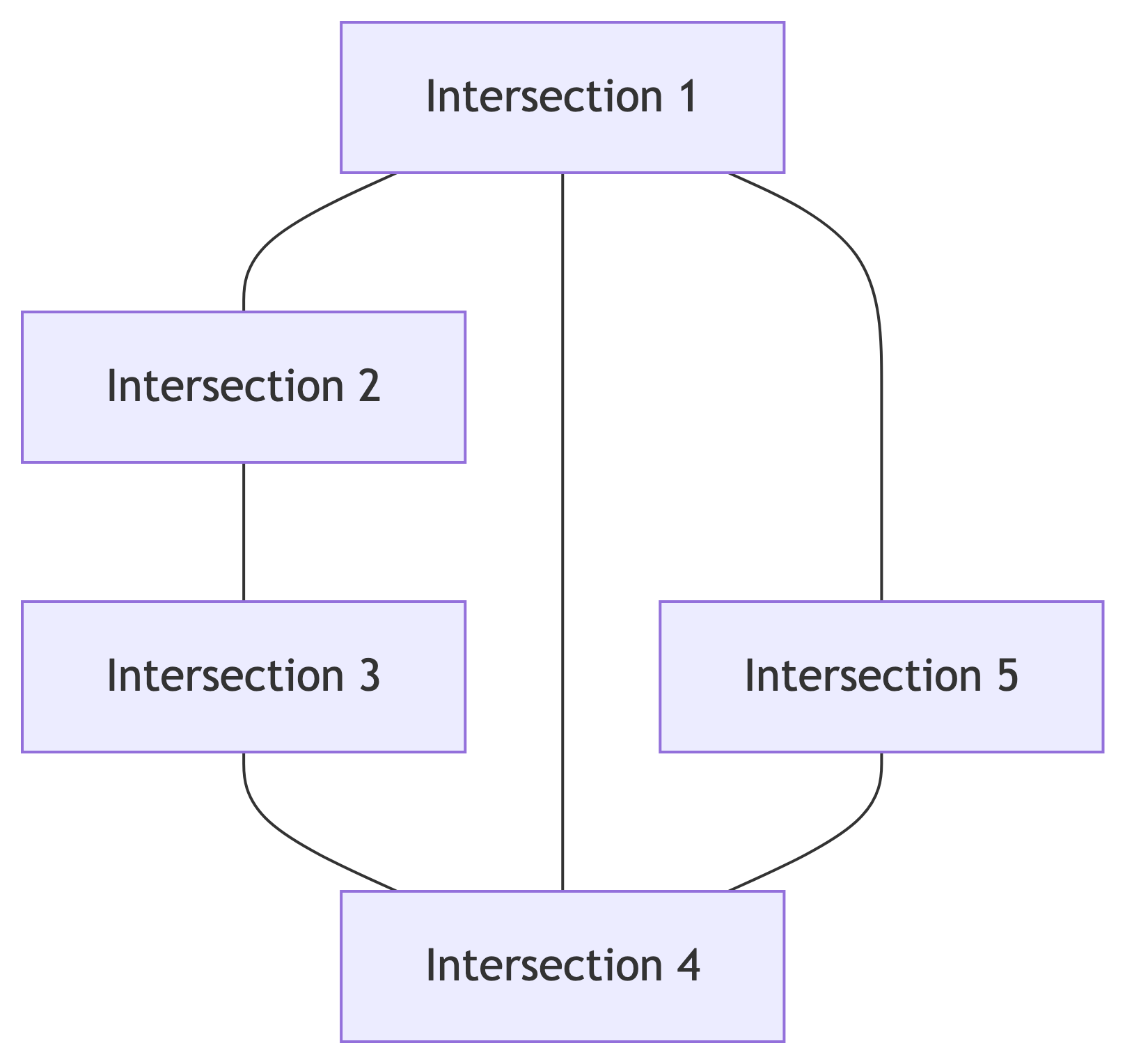
Implementation:
- Vertices = intersections
- Edges = road segments
- Used by GPS navigation systems
Web Structure
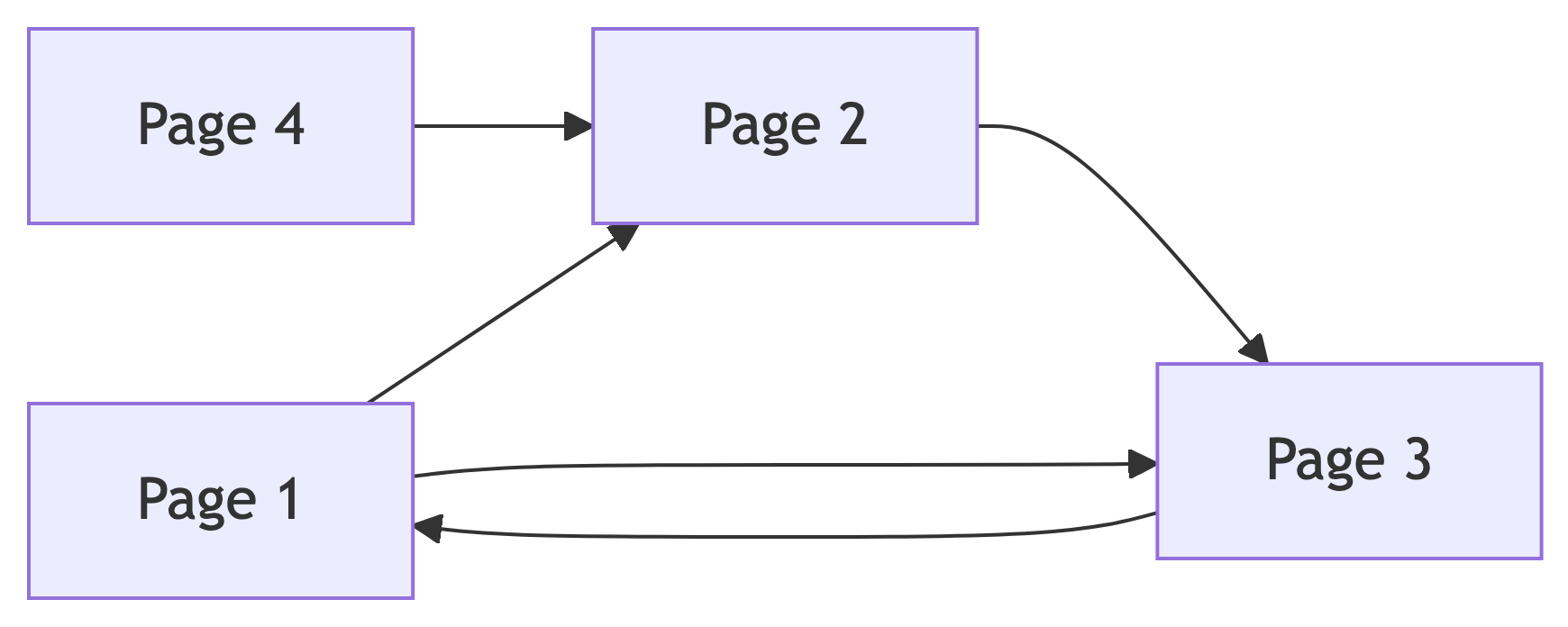
Key Features:
- Vertices = web pages
- Edges = hyperlinks
- Foundation of PageRank algorithm
Dependency Networks
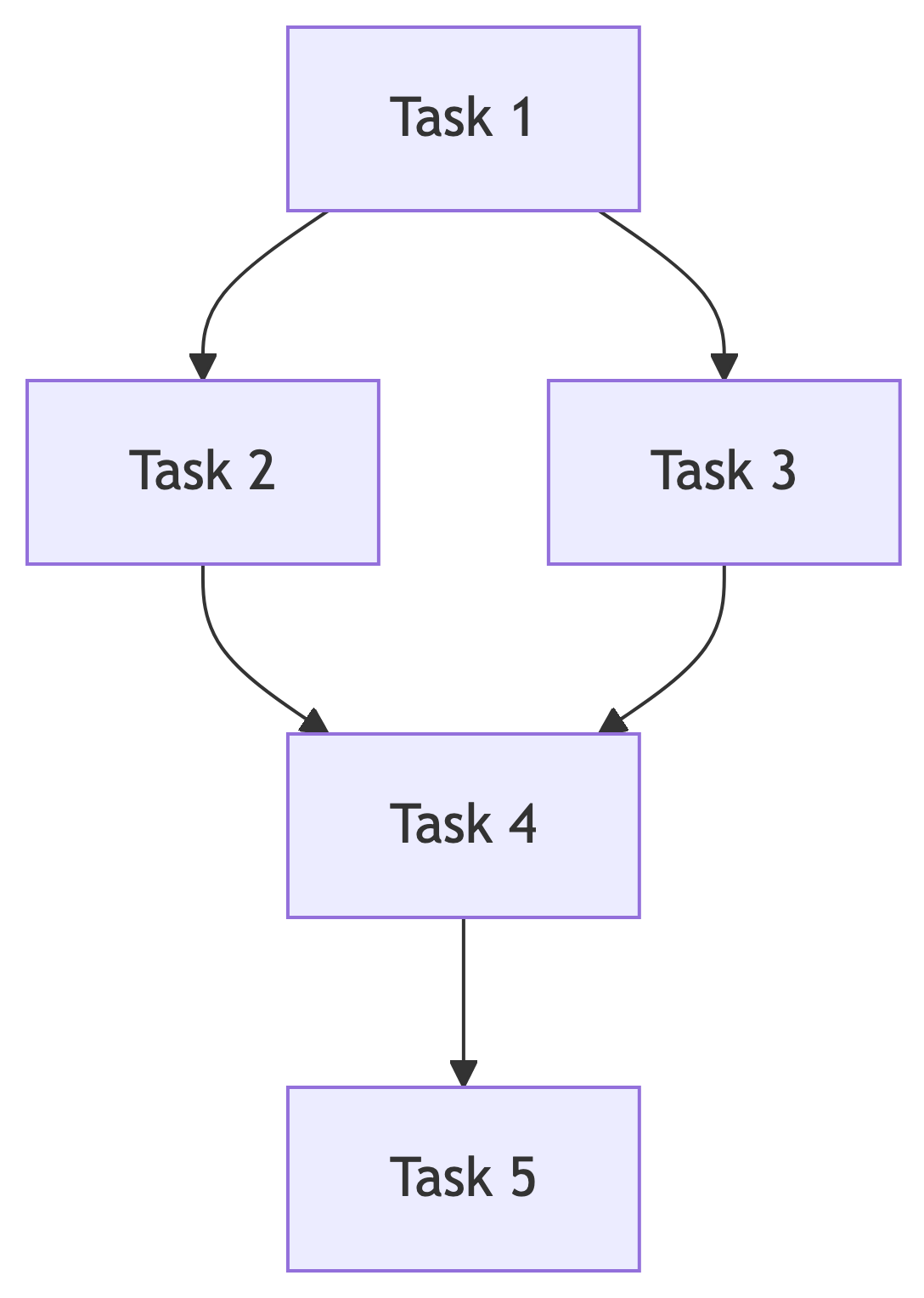
Use Cases:
- Project scheduling
- Software compilation
- Course prerequisites
Graph Size Analysis
Measuring Graph Size
Two key metrics:
- n = number of vertices
- m = number of edges
Fundamental bounds:
- Minimum edges: m ≥ 0
- Maximum edges (undirected): m ≤ n(n-1)/2
- Maximum edges (directed): m ≤ n(n-1)
Sparse vs Dense Graphs
Sparse Graph: m ≈ O(n)

Dense Graph: m ≈ O(n²)
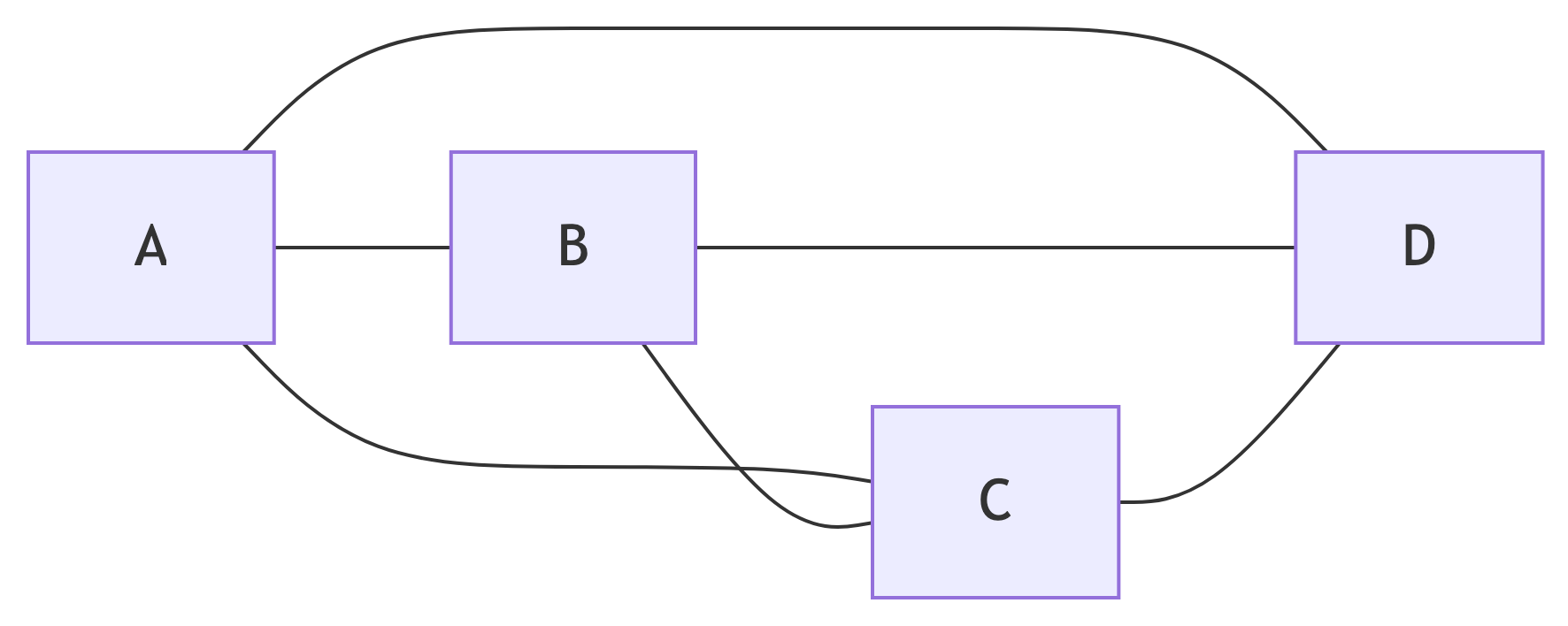
When Is a Graph Dense?
Mathematical Definition:
- Sparse: m = O(n) or m = O(n log n)
- Dense: m = Θ(n²)
Practical Examples:
- Social networks: typically sparse
- Complete graphs: always dense
- Road networks: usually sparse
Graph Representation
Two Main Approaches
Adjacency Lists:
- Space efficient for sparse graphs
- Fast edge iteration
- Preferred for most algorithms
Adjacency Matrix:
- Space efficient for dense graphs
- Fast edge lookup
- Simple implementation
Adjacency List Representation
Core Components:
- Vertex Array: stores vertex information
- Edge Array: stores edge information
- Edge → Vertex pointers: each edge points to endpoints
- Vertex → Edge pointers: each vertex points to incident edges
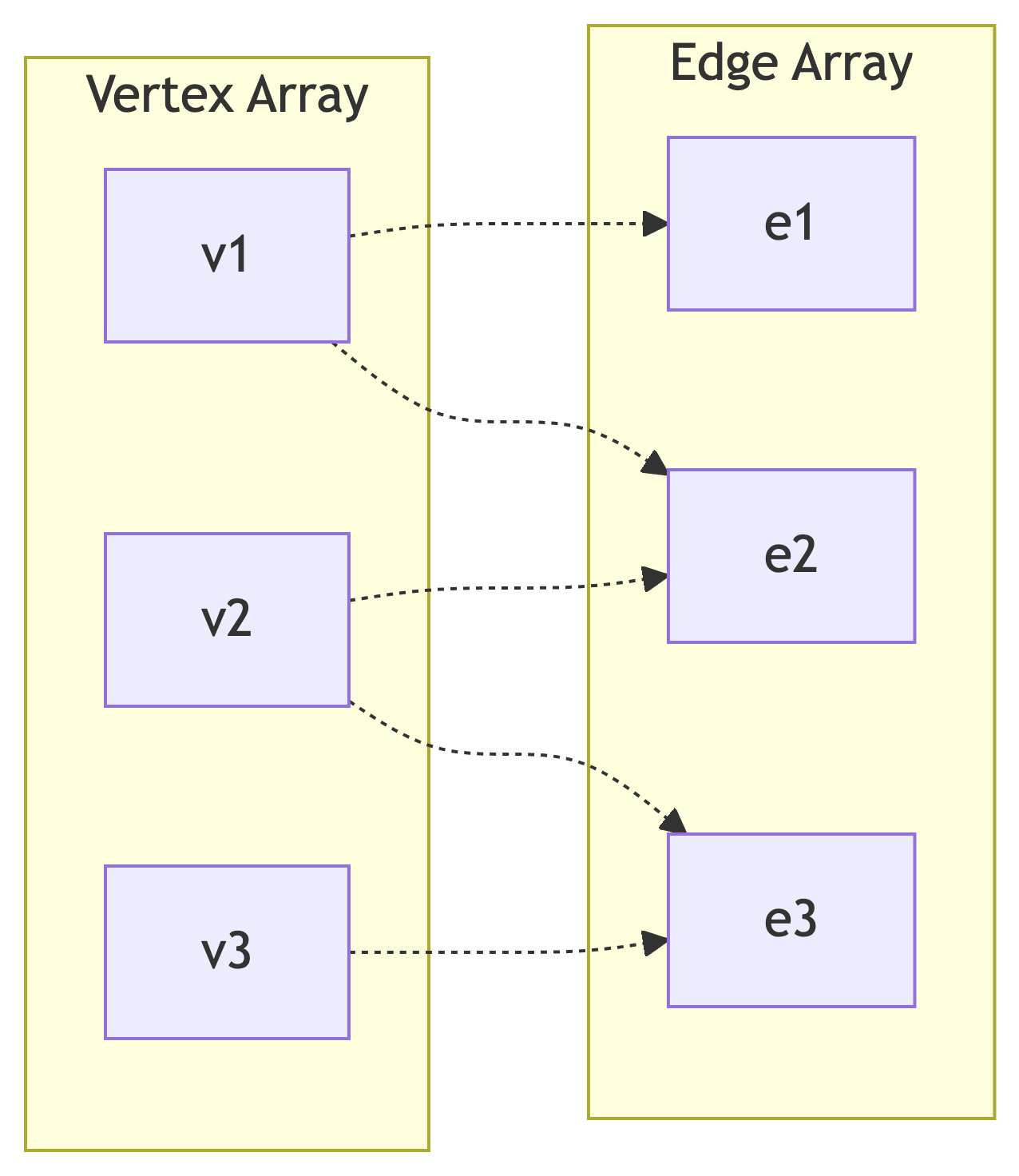
Adjacency List: Space Analysis
Space Complexity: Θ(m + n)
Breakdown:
- Vertex array: Θ(n)
- Edge array: Θ(m)
- Edge→vertex pointers: Θ(m)
- Vertex→edge pointers: Θ(m)
Total: Θ(n + m + m + m) = Θ(m + n)
Adjacency List Example
Graph:

Adjacency List Representation:
- Vertex 1: [2, 3]
- Vertex 2: [1, 3]
- Vertex 3: [1, 2]
Each vertex stores list of neighbors
Adjacency Matrix Representation
Structure: n × n matrix A where:
- A[i,j] = 1 if edge (i,j) exists
- A[i,j] = 0 if no edge
Undirected graphs: A[i,j] = A[j,i] (symmetric)
Directed graphs: A[i,j] ≠ A[j,i] generally
Adjacency Matrix Example
Graph:

Matrix Representation:
1 2 3
1 [ 0 1 1 ]
2 [ 1 0 1 ]
3 [ 1 1 0 ]Adjacency Matrix: Space Analysis
Space Complexity: Θ(n²)
Characteristics:
- Always uses n² bits regardless of edge count
- Efficient for dense graphs (m ≈ n²)
- Wasteful for sparse graphs (m ≈ n)
- Fast edge existence queries: O(1)
Comparison and Trade-offs
Adjacency Lists vs Adjacency Matrix
| Operation | Adjacency List | Adjacency Matrix |
|---|---|---|
| Space | Θ(m + n) | Θ(n²) |
| Edge lookup | O(degree(v)) | O(1) |
| Add edge | O(1) | O(1) |
| Remove edge | O(degree(v)) | O(1) |
| Find neighbors | O(degree(v)) | O(n) |
When to Use Each Representation
Use Adjacency Lists when:
- Graph is sparse (m ≈ n)
- Need to iterate over neighbors frequently
- Memory is limited
- Most graph algorithms prefer this
Use Adjacency Matrix when:
- Graph is dense (m ≈ n²)
- Need fast edge existence queries
- Working with mathematical graph operations
- Graph size is small and fixed
Implementation Considerations
Adjacency Lists:
- Dynamic arrays or linked lists
- Easy to add/remove vertices
- Cache-friendly for sparse graphs
- Standard choice for most algorithms
Adjacency Matrix:
- Fixed-size 2D array
- Simple bit operations
- Good for mathematical computations
- Parallel processing friendly
Quiz Time!
Quiz Question 1
For an undirected graph with n vertices, what is the maximum possible number of edges?
- n
- n - 1
- n(n-1)/2
- n²
Quiz Question 2
Which representation is better for a sparse graph with 1000 vertices and 1500 edges?
- Adjacency Matrix
- Adjacency List
- Both are equivalent
- Depends on the operations
Quiz Question 3
In an adjacency list representation, how many operations are needed to check if edge (u,v) exists?
- O(1)
- O(log n)
- O(degree(u))
- O(n)
Practical Applications
Algorithm Performance Impact
Graph Search Algorithms:
- Breadth-First Search: O(m + n)
- Depth-First Search: O(m + n)
- Both prefer adjacency lists
Shortest Path Algorithms:
- Dijkstra’s: O((m + n) log n) with heaps
- Works with both representations
- Adjacency lists usually faster
Memory Usage in Practice
Real-world example: Facebook social graph
- ~3 billion users (vertices)
- ~200 billion friendships (edges)
- Average degree: ~130
- Adjacency matrix: 9 × 10¹⁸ bits ≈ 1 exabyte
- Adjacency list: ~400 billion entries ≈ 1.6 TB
Clear winner: Adjacency lists!
Graph Processing Libraries
Common implementations:
- NetworkX (Python): adjacency lists
- igraph (R/Python): adjacency lists
- GraphX (Spark): distributed adjacency lists
- SNAP (C++): adjacency lists
Industry standard: Adjacency lists with optimizations
Advanced Topics Preview
What’s Next?
Graph Search Algorithms (Chapter 8):
- Breadth-First Search (BFS)
- Depth-First Search (DFS)
- Connected Components
- Topological Sort
Shortest Path Algorithms (Chapter 9):
- Dijkstra’s Algorithm
- Single-source shortest paths
- Applications to routing
Graph Algorithm Complexity
All upcoming algorithms are “for-free primitives”:
- Running time: O(m + n)
- Just slightly more than reading input
- Can apply liberally to understand graph structure
Key insight: Linear-time graph algorithms are incredibly powerful!
Modern Graph Challenges
Big Data Graphs:
- Distributed storage and computation
- Streaming graph algorithms
- Approximate algorithms for massive graphs
Machine Learning on Graphs:
- Graph Neural Networks
- Node embeddings
- Graph classification
Summary
Key Takeaways
Graph Fundamentals:
- Graphs model pairwise relationships
- Directed vs undirected matters
- Vertices = objects, Edges = relationships
Representation Trade-offs:
- Adjacency lists: Θ(m + n) space, prefer for sparse graphs
- Adjacency matrix: Θ(n²) space, prefer for dense graphs
- Most algorithms use adjacency lists
Design Principles
When designing with graphs:
- Identify vertices and edges clearly
- Choose representation based on density
- Consider the operations you’ll need most
- Remember adjacency lists are usually best
- Think about scalability early
Next Steps
Build on this foundation:
- Practice implementing both representations
- Study graph search algorithms
- Explore real-world graph datasets
- Consider distributed graph processing
- Learn graph visualization techniques
Social Networks
Applications: